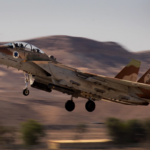
The Senate Armed Services Committee is pressing the Army to provide its acquisition strategies for night vision devices and its tactical wheeled vehicle fleet, with the latter not having been updated since 2014. The directives are included in the bill report released Tuesday accompanying SASC’s version of the $886 billion fiscal year 2024 National Defense Authorization Act, which the committee voted to approve last month. For night vision devices, SASC calls for a provision directing the Army Secretary to deliver…

 By
By 









